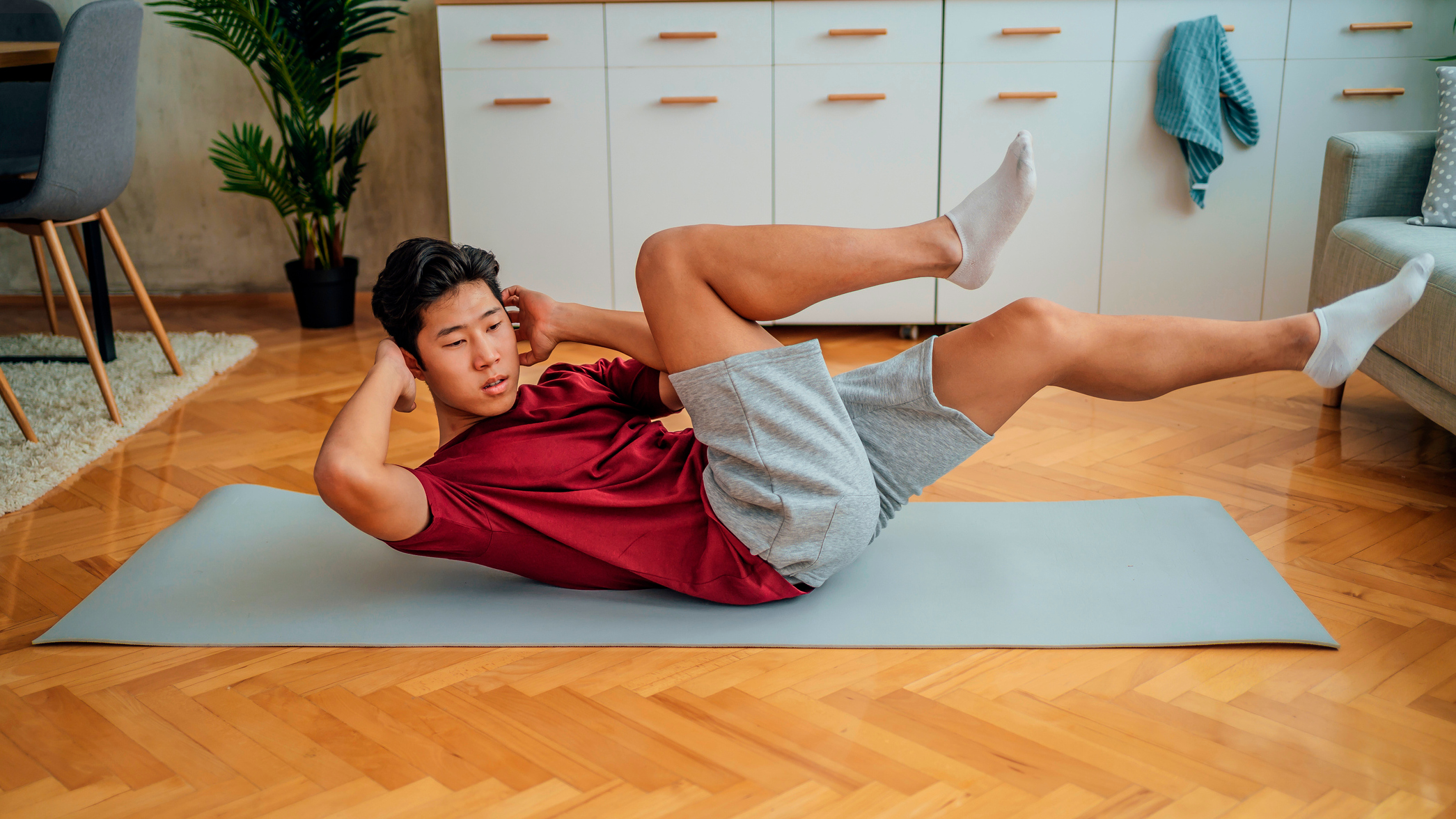
Roughly 35 of the 639 skeletal muscle groups that make up the human body are responsible for flexing, extending and stabilizing your core. Typically gym-goers remember to strengthen the area with plank exercises and crunches, but often rotational core exercises are overlooked, leading to weaknesses that can limit your true physical potential.
Rotational exercises, such as woodchops and Russian twists, engage a broad range of abdominal muscles around the front, side and back of your core. They are especially effective at strengthening the obliques, the muscles running down the side of your torso. (Trust us, you have them, whether you can feel them or not.)
These oblique muscles are responsible for rotational movements in everyday life, like reaching to grab something off a shelf next to your sofa or turning the lamp off before bed. They also provide huge cross-over benefits for sports that involve lots of twisting and turning, as well as for any exercise that involves lifting weights overhead.
Here, Reid Stafford, head trainer at Ultimate Performance Kensington, explains what is meant by rotational exercises and why you would be foolish not to add them into your core workouts.
What are rotational exercises?
Rotational exercises are quite simply movements that require you to engage the obliques by twisting your torso.
What are the benefits of rotational exercises?
Becoming stronger and more adept at rotational exercises is vital for almost every sport. They are demonstrably useful for activities like tennis, golf or baseball, in which you need to rotate your torso at speed, but are equally important for any action involving running, jumping, twisting, turning or even simply standing.
“Exercises like squats and deadlifts require a really strong, tight core,” says Stafford. That’s because improving your rotational strength enables you to resist rotation as well as generate it. “Getting stronger at rotational exercises helps stabilize your body when performing big lifts so you can channel all your power into lifting the weight off the floor.”
Four Rotational Exercises To Try
You can practice rotational exercises with just your bodyweight using moves like bicycle crunches, but for an everyday action like rotation, adding weight is essential to make progress. “Treat the core muscles in the same way you would those involved in a deadlift or a back squat,” says Stafford. “Overload the muscles progressively to make them stronger.”
You can use free weights for Russian twists, for example, but there’s one piece of equipment that Stafford recommends above all others. “The best and easiest way to improve rotational strength is by using a cable machine,” he says. Cables allow you to gradually increase load safely, and because they apply resistance evenly throughout a lift, making every section of the exercise a challenge from beginning to end.
Here, Stafford has selected his favorite rotational exercises to improve core strength and stability, along with the optimal rep ranges to maximize results.
Cable rotation
Sets 3 Reps 8 each side
Attach a single D-handle to a dual cable machine around mid-chest height. Face slightly away from the cable stack, or face further away from the cable stack to increase the difficulty. Hold the cable with both hands and your arms straight. Brace your core and pull the handle across your body in a lateral arc. Very slowly return the handle to the original position and repeat for eight reps, then switch sides.
Cable woodchop
Sets 3 Reps 8 each side
Attach a D-handle to the cable machine near the top of the frame and stand side-on with your legs slightly wider than shoulder-width apart to provide you with a solid base. Hold the handle with both hands, with a slight bend in your knees, and with your core engaged. Keeping your arms straight, pull the handle diagonally across your body to your opposite thigh. Slowly return the weight to the start. Do all the reps on one side, then switch.
Bicycle crunch
Sets 3 Reps 12
Lie with your lower back pressed into the floor to engage your abs. Tuck your chin in to your chest, lightly touching the sides of your head with your hands, and raise your legs off the floor with knees bent. Extend your right leg while twisting your torso to bring your right elbow toward your left knee. Then bring your right leg in as you extend your left leg and twist your left elbow toward your right knee. Continue for 12 slow and controlled reps.
Russian twist
Sets 3 Reps 8 each side
Using a moderately heavy medicine ball or kettlebell, sit on the floor and lean backward until your torso is at 45˚ with your legs in front of you and a slight bend in your knees. Hold the weight to one side of your body in both hands and, keeping your core engaged, slowly lift it across to the other side. Continue this motion slowly, with control.







